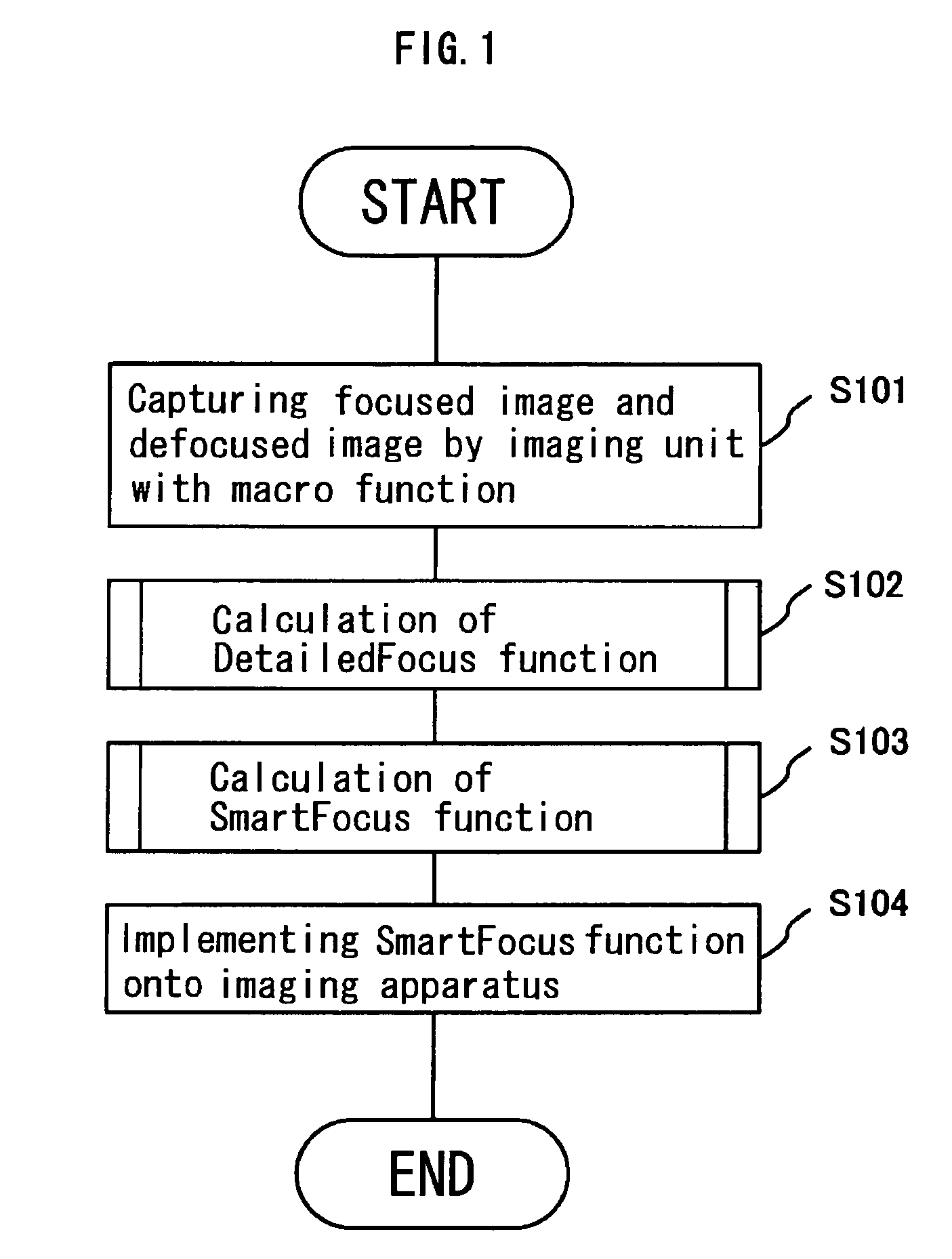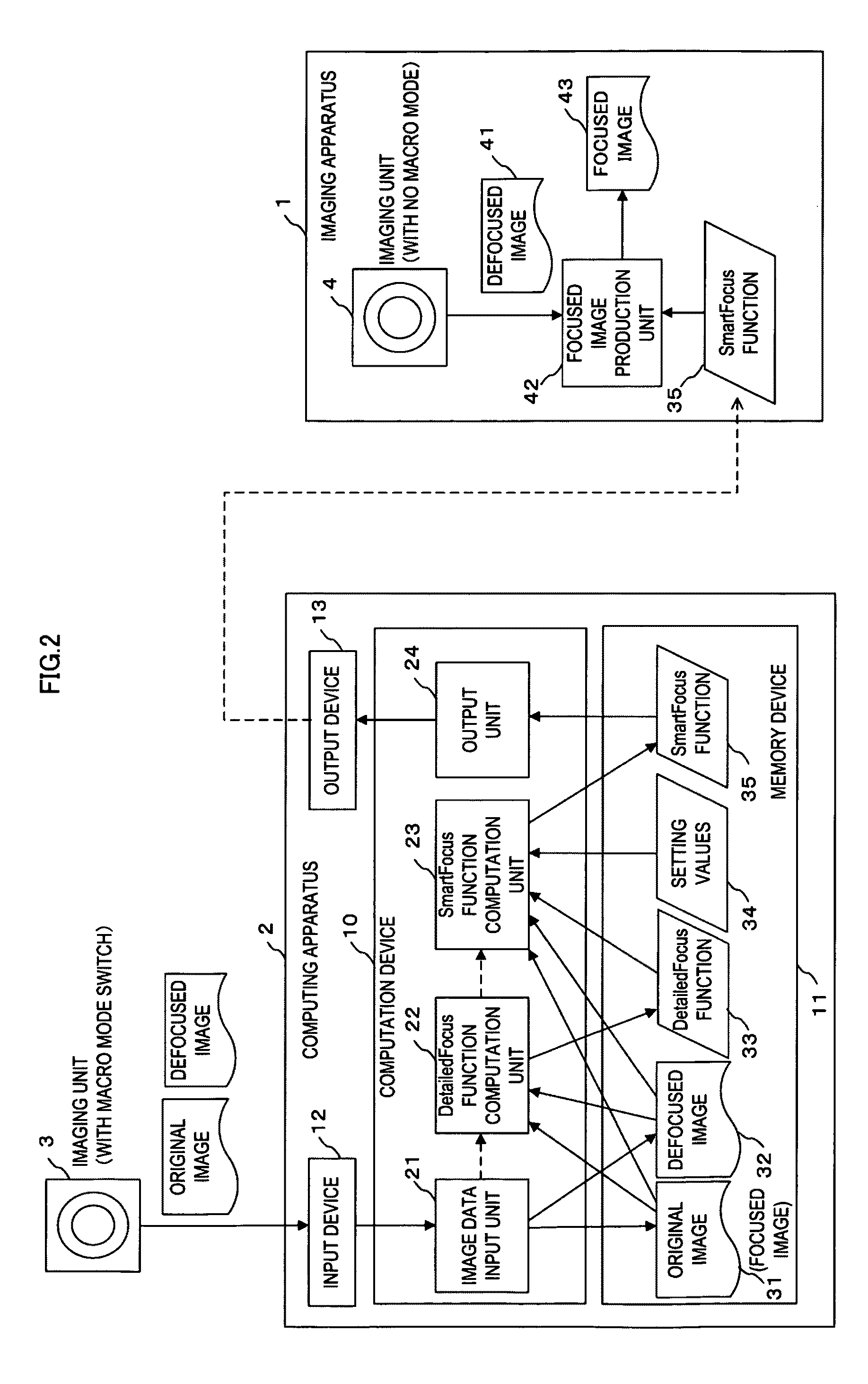Image data processing method and imaging apparatus
a processing method and imaging technology, applied in the field of image data processing method and imaging apparatus, can solve the problems of insufficient correction for lack of focus, the processing cost of a focusing process is approximately 10 times larger than the processing cost of a corresponding defocusing process, etc., and achieve the effect of reducing resource usag
- Summary
- Abstract
- Description
- Claims
- Application Information
AI Technical Summary
Benefits of technology
Problems solved by technology
Method used
Image
Examples
first embodiment
[0047]Preferred embodiments in accordance with this invention will be described below. FIG. 1 is a flowchart of the digital macro process.
[0048]Firstly, both a focused image and a defocused image are captured as original images, and then both image data are input into computing apparatus 2 such as a personal computer (S101).
[0049]An original image focused image and defocused image can be captured using the following method.
(Method 1)
[0050]A close-up image of a subject, such as a chart, is captured out of focus to obtain a defocused image. Next, to obtain a focused image, the same chart is enlarged and printed out, and then the chart printout is captured so that it will be in focus and at the same size as the defocused image. Then the focused image is input into computing apparatus 2.
(Method 2)
[0051]Firstly, an image of a subject is captured by setting an imaging unit with a macro function to the macro mode. This image is the focused image, use this image as an original image, and in...
second embodiment
[0084]the present invention is described here. This embodiment describes the procedure for correcting and sharpening an image that is both out of focus and has camera shake when it was captured by imaging unit 4 without a macro function.
[0085]For an image where it is both out of focus and has camera shake, the following steps S11 to S15 can be taken to produce a focused image corrected for camera shake.[0086](S11) First, produce an intensity image of n defocused images that were captured in rapid succession.[0087](S12) Next, extract feature points from each intensity image.[0088](S13) Of the n intensity images, use one of its intensity images as the reference image, such as the first one which allows images obtained afterwards to become target images, and by performing the feature point matching process, the motion data can be calculated. Therefore, calculate the motion data between the corresponding feature points of the reference image and each of n−1 target images.[0089](S14) Use...
PUM
 Login to View More
Login to View More Abstract
Description
Claims
Application Information
 Login to View More
Login to View More - R&D
- Intellectual Property
- Life Sciences
- Materials
- Tech Scout
- Unparalleled Data Quality
- Higher Quality Content
- 60% Fewer Hallucinations
Browse by: Latest US Patents, China's latest patents, Technical Efficacy Thesaurus, Application Domain, Technology Topic, Popular Technical Reports.
© 2025 PatSnap. All rights reserved.Legal|Privacy policy|Modern Slavery Act Transparency Statement|Sitemap|About US| Contact US: help@patsnap.com



